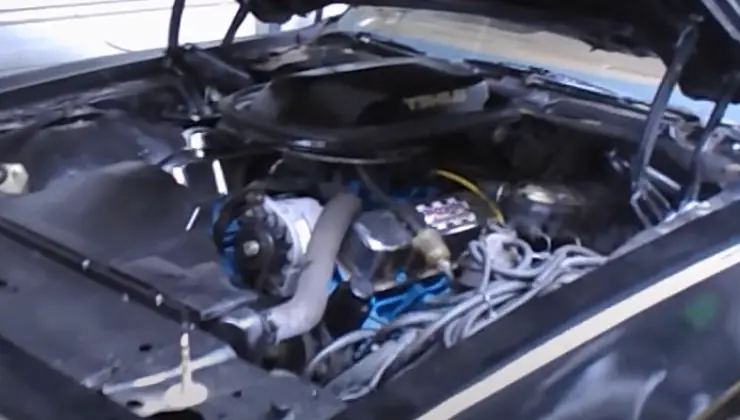When it comes to engines, there are a lot of terminologies that can be confusing, especially for those who are not automotive enthusiasts. One of the most common questions people ask is whether a Pontiac 400 engine is a big block or a small block engine. In this article, we’ll dive deep into the world of engine terminology and explore the Pontiac engine family to determine whether the Pontiac 400 is a big block engine.
Contents
Engine Terminology
The most basic classification of engines is based on the number of cylinders, i.e., four, six, eight, or more. However, this classification is not always accurate when it comes to determining the size of an engine.
To accurately determine the size of an engine, we need to consider its displacement, which is the volume of air and fuel mixture that can be drawn into the engine during one cycle. Displacement is usually measured in cubic inches (CI) or cubic centimeters (CC). The larger the displacement, the more powerful the engine.
Another important terminology is the “block,” which refers to the engine’s main component, where the cylinders and other essential parts are housed. The size of the engine block is used to classify engines as big block or small block engines.
Pontiac Engine Family
Pontiac engines were produced by General Motors between 1955 and 1981. They were mainly used in Pontiac cars, but they were also used in other General Motors brands like Chevrolet, Oldsmobile, and Buick.
The Pontiac engine family is divided into two categories, the small-block, and the big-block engines. The small block engines have a displacement range of 265 to 400 CI, while the big block engines range from 421 to 455 CI. Based on this information, it’s safe to say that the Pontiac 400 engine falls within the small block engine category.
Pontiac 400 Engine Specs
The Pontiac 400 engine was produced from 1967 to 1979. It was a high-performance V8 engine that was used in various Pontiac cars. The engine had a displacement of 400 cubic inches, which was achieved by increasing the bore of the Pontiac 389 engine.
The Pontiac 400 engine had a horsepower output of 265 to 330 hp, depending on the model year and modifications made to the engine. It also had a torque output of 400 to 445 lb-ft. The engine had a compression ratio of 8.6:1, which was quite low compared to other high-performance engines of its time.
Big Block vs. Small Block Engines
Now that we know that the Pontiac 400 engine is a small-block engine let’s take a closer look at the key differences between big-block and small-block engines.
What is a Big Block Engine?
Big block engines are generally larger and heavier than small block engines. They have a bigger engine block, which allows for larger cylinder bores and more significant piston strokes, resulting in higher displacement. Big block engines typically have a displacement of over 400 cubic inches and are designed for high-performance applications, such as drag racing and high-speed cruising.
What is a Small Block Engine?
On the other hand, small block engines have a smaller engine block, which limits their displacement. They typically have a displacement of less than 400 cubic inches and are designed for everyday driving, as well as some performance applications. Small block engines are lighter and more compact than big block engines, making them easier to fit in smaller engine compartments.
Key Differences Between Big and Small Block Engines
The primary differences between big-block and small-block engines are size and weight. Big block engines are larger and heavier than small block engines, which can affect the vehicle’s handling and fuel efficiency. Big block engines also typically have more significant horsepower and torque output than small block engines, making them better suited for high-performance applications.
Small block engines are more fuel-efficient and easier to work with, making them ideal for everyday driving. They are also less expensive than big block engines and easier to find replacement parts for. However, small block engines may not be as powerful as big block engines, so they may not be suitable for high-performance applications.
Pros of Pontiac 400 Engine
The Pontiac 400 engine was known for its excellent performance and reliability. It had a robust bottom end, which made it capable of handling high horsepower and torque outputs. The engine also had a high-flowing head design, which allowed for better airflow and combustion efficiency. The Pontiac 400 engine was a popular choice for high-performance applications, such as drag racing and street racing.
Cons of Pontiac 400 Engine
One of the drawbacks of the Pontiac 400 engine was its low compression ratio, which limited its horsepower and torque output. The engine also had a reputation for being thirsty, which means it consumed more fuel than other engines of its size.
Additionally, the engine was not as widely supported as other V8 engines of its time, which made finding replacement parts and aftermarket upgrades challenging.
Pontiac 400 Engine Modifications
Despite its drawbacks, the Pontiac 400 engine was a popular choice for enthusiasts who wanted to modify their engines for better performance.
Some common modifications for the Pontiac 400 engine include upgrading the camshaft, cylinder heads, and intake manifold, as well as installing a high-flowing exhaust system. These modifications can increase the horsepower and torque output of the engine, as well as improve its overall performance and drivability.
Conclusion
The Pontiac 400 engine is a small block engine that was known for its excellent performance and reliability. While it had a few drawbacks, such as its low compression ratio and fuel consumption, it was a popular choice for high-performance applications. The engine was also suitable for modifications, which could increase its horsepower and torque output, as well as improve its overall performance and drivability.
